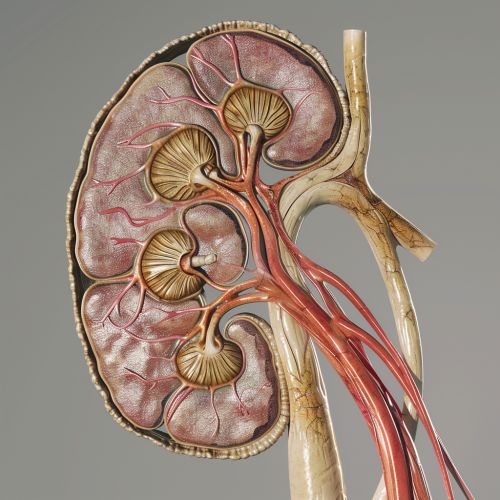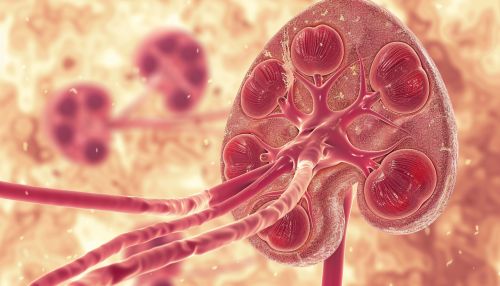Urology
Overview
Urology is a branch of medicine that focuses on the diagnosis, treatment, and management of diseases and disorders of the urinary tract and the male reproductive system. This specialty encompasses a wide range of conditions affecting the kidneys, ureters, bladder, urethra, and male reproductive organs including the prostate, testes, and penis. Urologists are medical professionals trained to perform surgical and non-surgical interventions to address these conditions.
History
The field of urology has ancient roots, with early references found in Egyptian, Greek, and Roman texts. The Hippocratic Corpus includes descriptions of bladder catheterization and the treatment of urinary stones. Significant advancements occurred during the Renaissance with the development of surgical instruments and techniques. The 19th and 20th centuries saw the emergence of urology as a distinct medical specialty, driven by innovations such as cystoscopy and the introduction of antibiotics.
Anatomy and Physiology
The urinary system consists of the kidneys, ureters, bladder, and urethra. The kidneys filter blood to produce urine, which is transported to the bladder via the ureters. The bladder stores urine until it is expelled from the body through the urethra. In males, the reproductive system includes the testes, epididymis, vas deferens, seminal vesicles, prostate gland, and penis. These structures are responsible for the production, storage, and delivery of sperm.


Common Urological Conditions
Urinary Tract Infections (UTIs)
UTIs are infections that can affect any part of the urinary system. They are more common in women and can cause symptoms such as dysuria, frequency, urgency, and hematuria. Diagnosis is typically made through urinalysis and urine culture. Treatment involves antibiotics, and prevention strategies include proper hygiene and hydration.
Kidney Stones
Kidney stones are hard deposits of minerals and salts that form in the kidneys. They can cause severe pain, hematuria, and urinary obstruction. Diagnosis is often made using imaging techniques such as ultrasound or CT scan. Treatment options include pain management, lithotripsy, and surgical removal.
Benign Prostatic Hyperplasia (BPH)
BPH is a non-cancerous enlargement of the prostate gland, common in older men. Symptoms include urinary frequency, urgency, nocturia, and weak stream. Diagnosis involves digital rectal examination (DRE), prostate-specific antigen (PSA) testing, and imaging. Treatment options range from medications to surgical interventions like transurethral resection of the prostate (TURP).
Prostate Cancer
Prostate cancer is one of the most common cancers in men. It is often asymptomatic in early stages but can lead to urinary symptoms and metastasis if untreated. Diagnosis is made through PSA testing, DRE, biopsy, and imaging. Treatment options include active surveillance, surgery, radiation therapy, and hormone therapy.
Erectile Dysfunction (ED)
ED is the inability to achieve or maintain an erection sufficient for satisfactory sexual performance. It can result from vascular, neurological, psychological, or hormonal factors. Diagnosis involves a thorough medical history, physical examination, and specialized tests. Treatment options include lifestyle modifications, medications, vacuum erection devices, and surgical implants.
Diagnostic Techniques
Cystoscopy
Cystoscopy is a procedure that allows direct visualization of the bladder and urethra using a cystoscope. It is used to diagnose and treat conditions such as bladder tumors, stones, and strictures.
Urodynamic Testing
Urodynamic tests assess the function of the bladder and urethra. These tests measure parameters such as bladder pressure, flow rate, and residual urine volume, helping to diagnose conditions like urinary incontinence and neurogenic bladder.
Imaging
Imaging techniques such as ultrasound, CT scan, MRI, and X-ray are crucial in diagnosing urological conditions. These modalities provide detailed images of the urinary tract and reproductive organs, aiding in the detection of abnormalities.
Surgical Interventions
Nephrectomy
Nephrectomy is the surgical removal of a kidney. It can be performed for conditions such as kidney cancer, severe trauma, or non-functioning kidneys. The procedure can be done through open surgery or minimally invasive techniques like laparoscopy.
Prostatectomy
Prostatectomy is the surgical removal of the prostate gland. It is commonly performed for prostate cancer and can be done using open, laparoscopic, or robotic-assisted techniques.
Ureteroscopy
Ureteroscopy involves the use of a ureteroscope to examine and treat conditions within the ureter and kidney. It is often used to remove stones or treat strictures.
Pediatric Urology
Pediatric urology addresses urological conditions in children. Common issues include congenital anomalies like hypospadias, vesicoureteral reflux, and undescended testes. Pediatric urologists are trained to manage these conditions using both surgical and non-surgical approaches.
Urological Oncology
Urological oncology focuses on cancers of the urinary tract and male reproductive organs. This includes kidney cancer, bladder cancer, prostate cancer, and testicular cancer. Treatment often involves a multidisciplinary approach, including surgery, chemotherapy, radiation therapy, and immunotherapy.
Female Urology
Female urology deals with conditions affecting the female urinary system and pelvic floor. Common issues include urinary incontinence, pelvic organ prolapse, and interstitial cystitis. Treatment may involve medications, pelvic floor exercises, and surgical interventions.
Urogynecology
Urogynecology is a subspecialty that combines aspects of urology and gynecology. It focuses on pelvic floor disorders in women, including urinary incontinence, fecal incontinence, and pelvic organ prolapse. Urogynecologists are trained to provide comprehensive care for these conditions.
Advances in Urology
The field of urology has seen significant advancements in recent years. Minimally invasive techniques such as laparoscopic and robotic-assisted surgery have revolutionized urological procedures, offering reduced recovery times and improved outcomes. Advances in imaging and diagnostic tools have enhanced the accuracy of diagnoses. Additionally, developments in pharmacotherapy and targeted therapies have improved the management of urological conditions.
